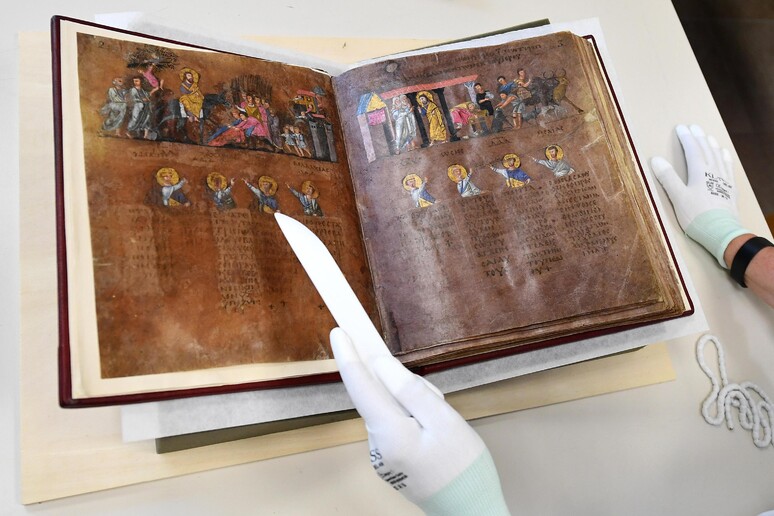The Codex Purpureus Rossanensis,
perhaps the most ancient illustrated book in history and on the
UN list of World Cultural Heritage since 2015, is returning to
the Calabrian town of Rossano where it was discovered, said
Monsignor Giuseppe Satriano, bishop of Calabria's
Rossano-Cariati archdiocese.
After having undergone a delicate and masterly restoration,
the manuscript, also known as the Rossano Gospels, will go on
display at the Rossano Calabro archdiocese museum starting July
2.
The illuminated gospel manuscript containing the gospels of
Matthew and Mark was produced on unique reddish-colored
parchment.
It depicts the story of Jesus with the merchants in the
Temple, told with images with such rich detail and color and
such fluid continuity that it almost seems like a film sequence.
It shows the solitude of Judas the traitor and the sense of
death that the image of a burned and blackened tree renders
better than any word could.
With explosive colours, it tells of the meeting of Mark the
Evangelist with Sophia.
The manuscript underwent three years of investigation and
analysis in the Roman laboratories of ICRCPAL, the Central
Institute for Restoration and Conservation of Archival and
Library Heritage.
That work confirmed its immeasurable value and Eastern
6th-century origin, and revealed new details about how it was
made.
The manuscript is a treasure that was so masterfully
created that it has survived intact for 15 centuries through
mishaps, perilous journeys, being taken apart, and even a fire,
restorers said.
It is, however, very fragile, and that's why it will be
housed in a temperature-controlled, continuously monitored
showcase that will be placed in a completely restored area of
the museum furnished with multimedia displays.
Each of the illuminated pages, 15 in all, is more
incredible than the last, as evidenced by ANSA photographs.
ALL RIGHTS RESERVED © Copyright ANSA











